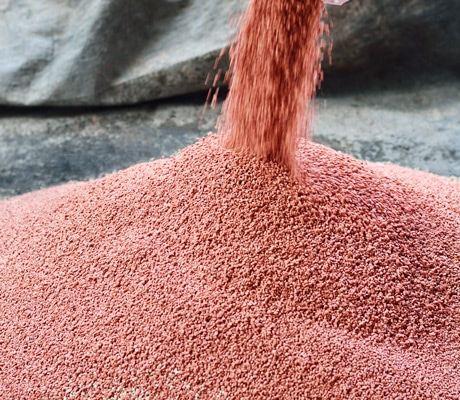
Russia Becomes India's Top DAP Fertiliser Supplier
India has imported about 3.5 lakh tonnes (lt) of di-ammonium phosphate (DAP) fertiliser from Russia, which would be arriving during the April to July period.
The imports have been contracted by Indian Potash Ltd, Rashtriya Chemicals & Fertilizers, Chambal Fertilisers and Krishak Bharati Cooperative at landed prices of $920-925 per tonne, cost plus freight (CFR). This is below the rates paid by other countries for DAP, mainly from China, Saudi Arabia, Morocco and Jordan.
Bangladesh's Agriculture Ministry, earlier this month, awarded an annual tender for import of 8.12 lt at $1,020-1,030 per tonne. Similarly, Indonesia and Thailand are reported to have paid $992 and $1,000 per tonne CFR respectively for 25,000-26,000 tonnes shipment each.
India contracting DAP from Russia's PhosAgro at $920 per tonne CFR – which is also the price cap that the government has put on importers – is likely to put pressure on other suppliers, especially Morocco's OCP Group, China's YUC and Saudi Arabia's Ma'aden and SABIC. They may have to cut prices to retain market share.
“It is a smart strategy to diversify one's supply sources. We did in urea by importing a large quantity of 47,000 tonnes for the first time from the US. The same is being done by sourcing more DAP (the country's second most-consumed fertiliser) from Russia at a discount to international prices,” industry sources told The Indian Express.
Total DAP import arrivals for April-July are projected at 9.5-9.8 lt. Out of that, roughly 3.5 lt will be supplied by PhosAgro, with Ma'aden and SABIC's share at 2.8 lt, YUC's at 1.27 lt and OCP's at 1.03 lt.
India, in 2021-22 (April-March), imported 58.60 lt of DAP valued at $4,007.50 million. The bulk of the 58.60 lt imported was accounted for by China (20.43 lt), Saudi Arabia (19.33 lt), Morocco (12.13 lt) and Jordan (2.46 lt).
Importing from Russia has presented problems from sanctions, forcing“innovative methods” of making payments.“The risk in this case has had to be borne by the seller (PhosAgro), since banks weren't willing to open letters of credit (to serve as a guarantee for payment) on the importers' behalf. Payments were then made by telegraphic transfer to the seller's account, upon the latter physically presenting the necessary documents (copy of invoice, certificate of origin, bill of lading, insurance policy, etc) 7-10 days after the cargo had set sail,” the sources explained. The total voyage time from Russia's Baltic Sea ports is 25-30 days.
“The imports have come at the right time when sowings for the kharif season have just started and will peak in July,” the sources added.

Legal Disclaimer:
MENAFN provides the
information “as is” without warranty of any kind. We do not accept
any responsibility or liability for the accuracy, content, images,
videos, licenses, completeness, legality, or reliability of the information
contained in this article. If you have any complaints or copyright
issues related to this article, kindly contact the provider above.
Most popular stories
Market Reseach
- B2PRIME Strengthens Institutional Team's Growth With Appointment Of Lee Shmuel Goldfarb, Formerly Of Edgewater Markets
- BTCC Exchange Scores Big In TOKEN2049 With Interactive Basketball Booth And Viral Mascot Nakamon
- Ares Joins The Borderless.Xyz Network, Expanding Stablecoin Coverage Across South And Central America
- Primexbt Launches Stock Trading On Metatrader 5
- Solana's First Meta DEX Aggregator Titan Soft-Launches Platform
- Moonacy Protocol Will Sponsor And Participate In Blockchain Life 2025 In Dubai
- Primexbt Launches Instant Crypto-To-USD Exchange


















Comments
No comment